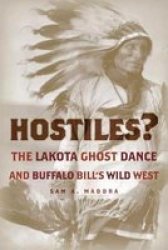Description
On March 30, 1891--less than four months after the military suppression of the Lakota Ghost Dance at Wounded Knee, South Dakota--twenty-three Lakota Sioux imprisoned at Fort Sheridan, Illinois, were released into the custody of William F. Cody. "Buffalo Bill," as Cody was known, then hired the prisoners as performers. Labeled "hostiles" by the federal government, the Lakotas would learn to play hostiles before British audiences in 1891-92 as part of the Wild West's second tour of Britain. In
Hostiles? Sam A. Maddra relates an ironic tale of Indian accommodation--and preservation of the Ghost Dance, which the Lakotas believed was a principled, restorative religion. To the U.S. Army, their religion was a rebellion to be suppressed. To the Indians, it offered hope in a time of great transition. To Cody, it became a means to attract British audiences. With these Lakotas, the showman could offer dramatic reenactments of the army's conquest, starring none other than the very "hostile Indians" who had staged the recent "uprising" in South Dakota. Cody's narrative of conquest is generally rejected, but few people even today question whether the Lakotas had twisted the original Ghost Dance into a violent resistance movement. Drawing on sources previous historians have overlooked, Maddra shows the fallacy of this view. Appended to this volume are five of Short Bull's narratives, including a new translation by Raymond J. DeMallie of a 1915 interview.
